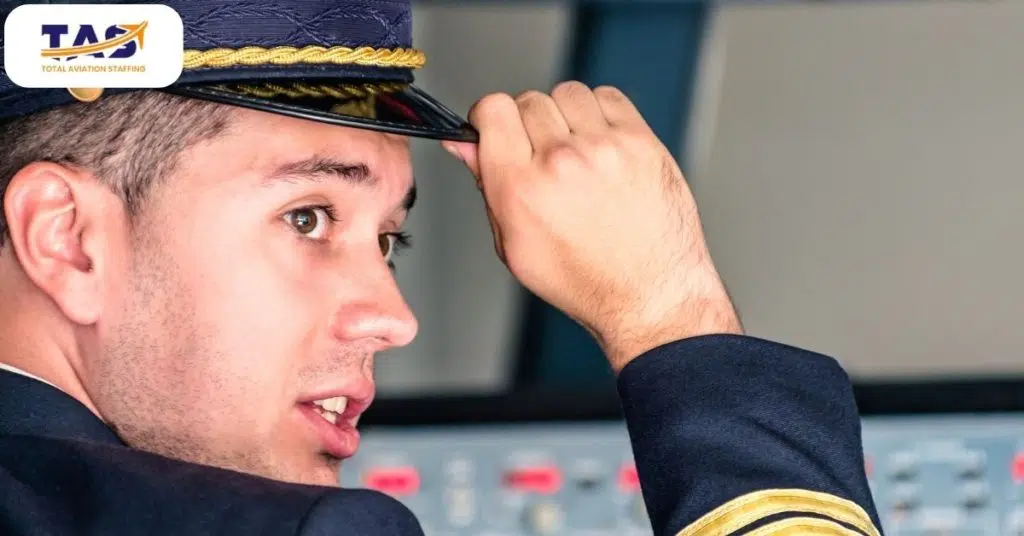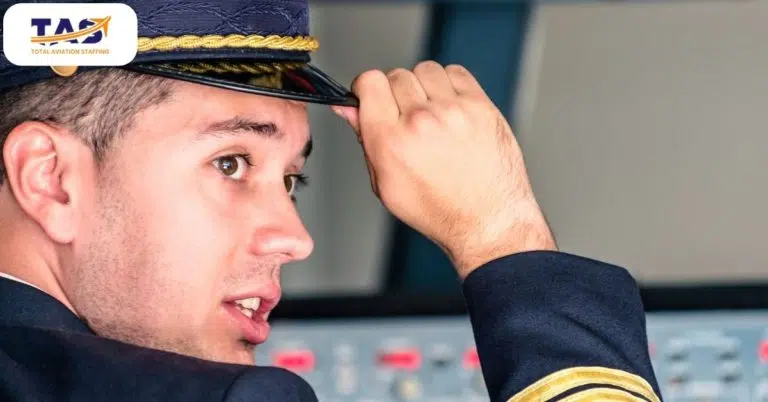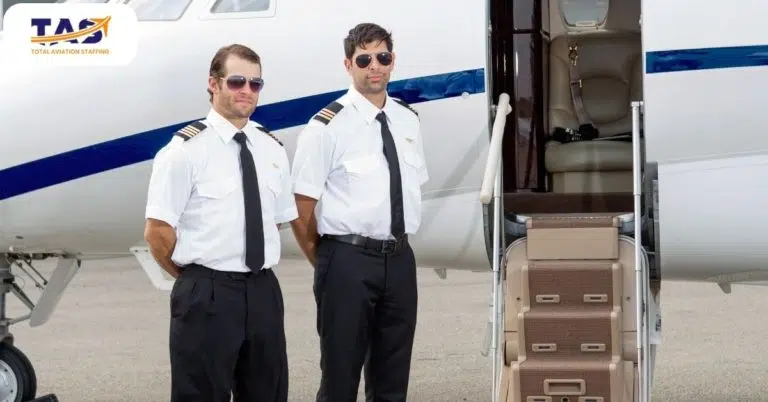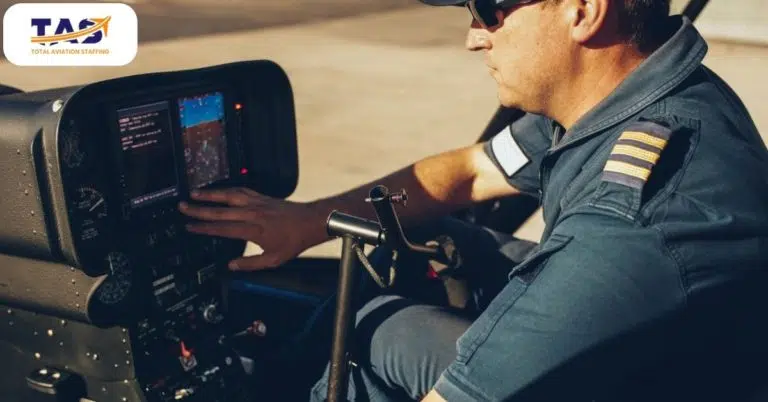Comprehensive Guide to Becoming a Direct Entry Captain

Embarking on the journey to become a Direct Entry Captain is an exhilarating pursuit for aviation enthusiasts seeking to soar to new heights in their careers. In this comprehensive guide, we unravel the path to Direct Entry Captaincy, offering valuable insights, essential tips, and step-by-step instructions to navigate this thrilling endeavor successfully.
From meeting prerequisites and honing skills to conquering challenges and becoming a proficient leader in the cockpit, this guide is your ultimate resource to master the art of commanding aircraft with confidence and excellence. So fasten your seatbelts as we take off on a transformative adventure toward becoming a Direct Entry Captain!
Prerequisites and Qualifications for Direct Entry Captains
Direct Entry Captain is an exciting opportunity for aviation enthusiasts, offering a stable and rewarding career. They ensure safe and efficient flight operations, making it sought-after in the industry.
Prerequisites and Qualifications:
1. Flight Experience:
A minimum of 950 FAR 121 hours is required under ATP or restricted ATP requirements.
2500 total flight hours, with at least 500 hours as PIC or 950 hours as SIC.
At least 500 hours of Multi-Engine Turbine experience.
2. Licensing and Permits:
Hold a valid FCC Restricted Radio Operator’s Permit.
Possess a First Class Medical certificate.
Must have a valid US or Foreign Passport with applicable VISAs.
3. Education:
High school diploma or equivalent.
4. Legal Authorization:
Demonstrate authorization to work in the US.
Proficiency in speaking, reading, and writing English.
If you dream of commanding aircraft and have the necessary qualifications, this Direct Entry Captain position offers an exceptional career path. Reach new heights with aviation passion. Join an innovative team, prioritizing safety, professional excellence, and growth opportunities.

Navigating the Selection Process and Interviews
Navigating the selection process and interviews for Direct Entry Captains is key to securing your dream aviation career. Understanding the steps involved and preparing effectively can boost your chances of success and stand out as a top candidate.
Navigate the selection process and interviews using these techniques and tips:
Research the Airline: Gather information about the airline’s history, values, and fleet to demonstrate your interest and commitment.
Review Job Requirements: Ensure you meet all prerequisites and qualifications outlined in the job description.
Update Your Resume: Tailor your resume to highlight relevant flight experience and accomplishments.
Prepare for Technical Questions: Be ready to answer technical questions about flight operations and safety.
Practice Behavioral Interviews: Prepare for behavioral-based questions to showcase your problem-solving and teamwork skills.
Demonstrate Safety Focus: Emphasize your commitment to safety and compliance with aviation regulations.
Highlight Leadership Abilities: Showcase your leadership skills and ability to manage a flight crew effectively.
Communicate Clearly: Articulate your responses with clarity and confidence during the interview.
Soar toward your dream role as a Direct Entry Captain! Prepare, excel, and showcase your aviation passion for a rewarding career in the skies!

Training and Certification Requirements for Aspiring Captains
Becoming a Direct Entry Captain in aircraft necessitates rigorous training, certification, and meeting specific competency criteria. These measures ensure safety and professionalism in commanding flights.
Training and Certification Requirements for Aspiring Direct Entry Captains:
Flight School Training: Complete formal training at an accredited aviation school to acquire fundamental flying skills.
Flight Hours Accumulation: Accumulate a minimum number of flight hours to gain experience and proficiency.
Airline Transport Pilot (ATP) License: Obtain an ATP license, the highest level of pilot certification, showcasing advanced skills.
Multi-Engine Rating: Earn a multi-engine rating to operate aircraft with multiple engines.
Type Rating: Attain a type rating specific to the aircraft model the candidate will command.
Simulator Training: Undergo simulator-based training to simulate real-life flight scenarios and emergency procedures.
Crew Resource Management (CRM): Complete CRM training to enhance teamwork and decision-making skills in the cockpit.
Medical Certification: Obtain a First Class Medical certificate to ensure physical and mental fitness.
Recurrent Training: Regularly undergo recurrent training to maintain proficiency and stay up-to-date with regulations.
By embracing the grueling training and certification, these future Captains soar with skills and knowledge, piloting the skies with finesse and flair. So, as they conquer aviation’s challenges, they earn their wings of excellence!

Gaining Experience and Building Flight Hours
Gaining experience and building flight hours is critical to a Direct Entry Captain’s journey in the aviation industry. These experiences shape their skills, decision-making abilities, and overall competence, making them proficient leaders in the cockpit.
Accumulating experience and flight hours hold paramount significance for the following reasons:
Enhance Decision-making Skills: Real-world experiences help Captains make informed decisions under various operational scenarios.
Develop Situational Awareness: Accumulated flight hours foster heightened situational awareness, crucial for safe flight operations.
Improve Airmanship: Experience refines airmanship skills, including precision in navigation, takeoffs, and landings.
Handle Emergencies Confidently: Experience prepares Captains to manage unexpected emergencies with composure and efficiency.
Understand Aircraft Performance: Building flight hours allow Captains to grasp their aircraft’s performance limitations and capabilities.
Adapt to Weather Conditions: Experience helps Captains handle diverse weather conditions better and ensure passenger safety.
Gain Leadership Abilities: Flight hours contribute to honing leadership qualities and effective communication with flight crews.
Meet Airline Requirements: Airlines often require a minimum number of flight hours for promotional opportunities.
As flight hours mount and experiences weave their wings of wisdom, Direct Entry Captains soar as seasoned aces. Armed with expertise and nerves of steel, they paint the skies with a symphony of leadership, orchestrating a harmonious dance between man and machine.

Developing Leadership and Decision-Making Skills
Developing strong leadership and decision-making skills is crucial for Direct Entry Captains in aircraft, ensuring safe and efficient flight operations. By honing these abilities, Captains become effective leaders in the cockpit.
Unlock the paths to leadership and decision-making prowess with these guiding ways:
Embrace Mentorship: Seek guidance from experienced Captains to learn from their insights and expertise.
Participate in Leadership Training: Attend workshops to enhance managerial and communication skills.
Analyze Case Studies: Study aviation-related case studies to understand effective decision-making in real-life scenarios.
Simulated Exercises: Engage in simulated exercises to practice making critical decisions in a risk-free environment.
Learn from Mistakes: Acknowledge and learn from mistakes to improve decision-making and leadership abilities.
Foster Effective Communication: Cultivate open and clear communication with the flight crew to ensure coordination and cooperation.
Take the initiative: Proactively take charge in challenging situations, displaying leadership and decisive qualities.
Team Collaboration: Encourage teamwork and collaborative problem-solving among crew members.
As the sun sets on the horizon of aviation excellence, Direct Entry Captains rise to the occasion, equipped with leadership and decision-making brilliance. With wings of mentorship, workshops, and simulations, they navigate the skies, knowing that fostering teamwork and learning from mistakes are the compasses that steer them true.
And remember, as you embark on this journey, let your passion soar and your determination take flight – for in the clouds of challenges lies the canvas where great captains paint their legacy.

Overcoming Challenges and Advancing in Your Career
Overcoming challenges and advancing in the aviation career as a Direct Entry Captain requires determination and strategic planning. By proactively addressing obstacles, Captains can pave the way for long-term success.
Navigate the path of career advancement with these key actions:
Continuous Learning: Stay updated with industry advancements and regulations through constant learning.
Seek Feedback: Request feedback from superiors and peers to identify areas for improvement.
Network and Build Relationships: Cultivate professional connections to explore growth opportunities within the aviation community.
Embrace Flexibility: Adapt to changing circumstances and embrace a flexible mindset to handle diverse challenges.
Demonstrate Resilience: Bounce back from setbacks and learn from failures to foster resilience and growth.
Set Clear Goals: Establish clear, achievable career goals and create a roadmap.
Prove Leadership Abilities: Showcase leadership skills through proactive decision-making and effective team management.
Pursue Advancement Opportunities: Seek promotional opportunities within airlines or explore leadership roles in other aviation sectors.
As you soar through the aviation skies, remember, challenges are mere air pockets in your path. Armed with determination and strategic flair, you’ll navigate turbulence with finesse. With a heart full of learning, a wing of resilience, and a cockpit of leadership, you’ll captain your career to glorious heights. So buckle up, Direct Entry Captain, and let the adventure unfold!

Tips for a Successful Transition to Direct Entry Captaincy
Transitioning to Direct Entry Captaincy is a significant milestone for pilots, demanding careful preparation and adaptation. By following essential tips, pilots can smoothly navigate this career advancement.
Aspiring Captains can follow these valuable tips:
Study Airline Procedures: Familiarize yourself with the airline’s policies, procedures, and standard operating protocols.
Learn the Aircraft Inside Out: Gain a comprehensive knowledge of the aircraft model you’ll be commanding.
Embrace Mentorship: Seek guidance from experienced Captains to gain insights and confidence in your new role.
Enhance Decision-making Skills: Develop swift and decisive decision-making abilities to lead confidently in various scenarios.
Communicate Effectively: Foster open and clear communication with your flight crew to promote efficient teamwork.
Maintain a Safety-first Approach: Prioritize safety above all else and instill a safety culture within your team.
Be Adaptable: Embrace adaptability to handle unexpected challenges and changing operational circumstances.
Cultivate Leadership Qualities: Demonstrate leadership through effective crew management and coordinated decision-making.
As you ascend to the coveted throne of Direct Entry Captaincy, remember, knowledge becomes your co-pilot, mentorship your trusty wingman, and safety your North Star. With these potent tools, your flight of success shall soar, and the skies of your aviation dreams will be forever yours to conquer.

The Bottom Line
From novice to the captain of your aviation destiny, our comprehensive guide empowers you to navigate the skies with flair. Armed with knowledge and fueled by ambition, soar through the prerequisites, embrace the turbulence, and emerge as a seasoned Direct Entry Captain. As you conquer the cockpit with wit and wisdom, remember, the sky’s the limit, and your journey to captaincy awaits—fly high and forge your path among the aviation elite!
Ready to Soar in Your Aviation Career?
Take control of your future with Total Aviation Staffing! Discover top job opportunities in the aerospace and aviation industry. Whether you aspire to be a skilled mechanic, technician, or flight attendant, or excel in customer service, we’ve got your dream role waiting. Let us elevate your career with our expert guidance, resume-building, and job search assistance. Your aviation destiny awaits—don’t miss your chance to fly high in the sky of opportunities. Visit us now and unleash your potential today!
